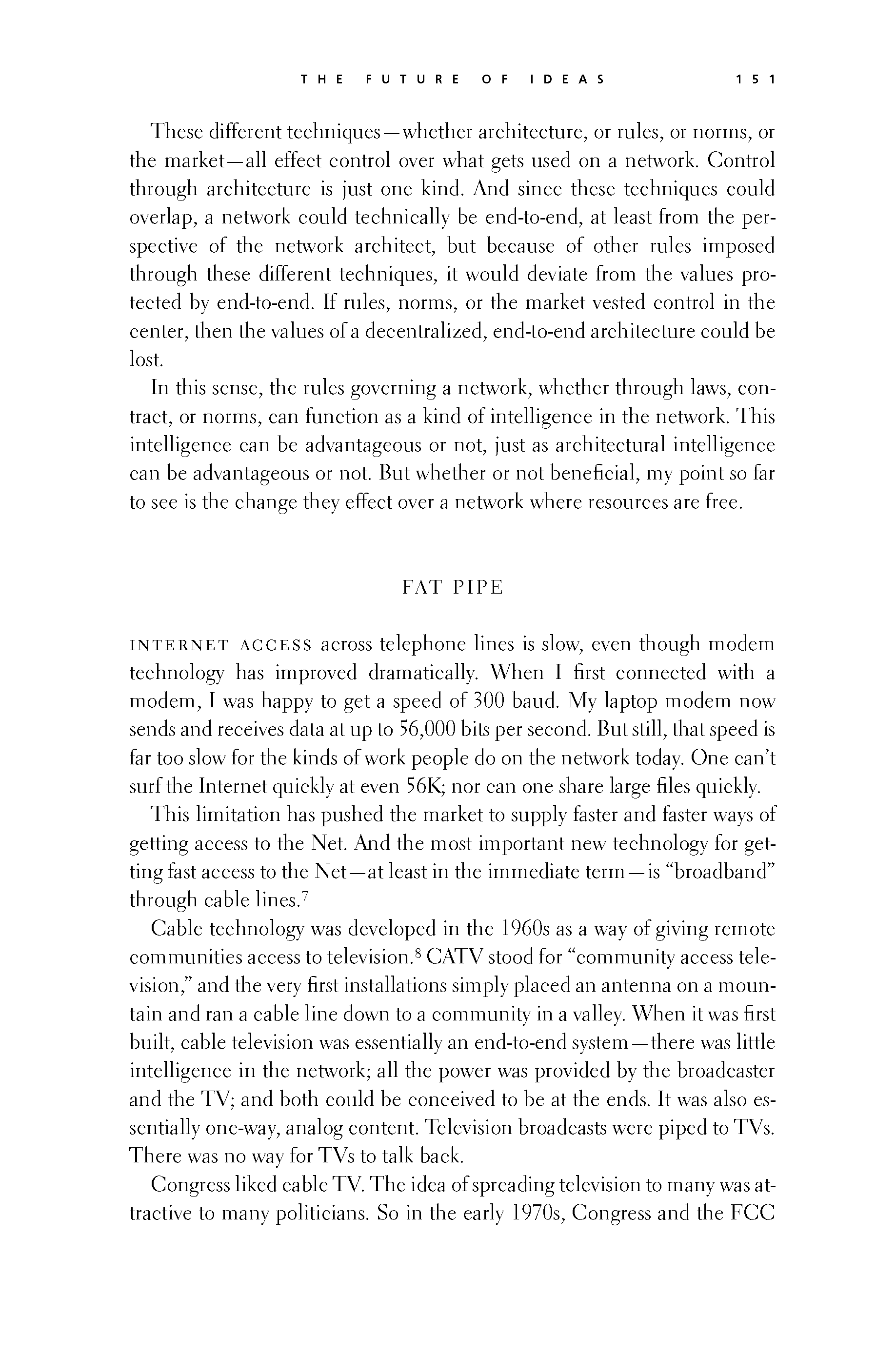 p150 _
-chap- _
toc-1 _
p151w _
toc-2 _
+chap+ _
p152
p150 _
-chap- _
toc-1 _
p151w _
toc-2 _
+chap+ _
p152
These different techniques -- whether architecture, or rules, or norms, or
the market -- all effect control over what gets used on a network. Control
through architecture is just one kind. And since these techniques could
overlap, a network could technically be end-to-end, at least from the per-
spective of the network architect, but because of other rules imposed
through these different techniques, it would deviate from the values pro-
tected by end-to-end. If rules, norms, or the market vested control in the
center, then the values of a decentralized, end-to-end architecture could be
lost.
In this sense, the rules governing a network, whether through laws, con-
tract, or norms, can function as a kind of intelligence in the network. This
intelligence can be advantageous or not, just as architectural intelligence
can be advantageous or not. But whether or not beneficial, my point so far
to see is the change they effect over a network where resources are free.
/tab\/tab\FAT PIPE/tab\/tab\
Internet access across telephone lines is slow, even though modem
technology has improved dramatically. When I first connected with a
modem, I was happy to get a speed of 300 baud. My laptop modem now
sends and receives data at up to 56,000 bits per second. But still, that speed is
far too slow for the kinds of work people do on the network today. One can't
surf the Internet quickly at even 56K; nor can one share large files quickly.
This limitation has pushed the market to supply faster and faster ways of
getting access to the Net. And the most important new technology for get-
ting fast access to the Net -- at least in the immediate term -- is "broadband"
through cable lines.[10-7]
Cable technology was developed in the 1960s as a way of giving remote
communities access to television.[10-8] CATV stood for "community access tele-
vision," and the very first installations simply placed an antenna on a moun-
tain and ran a cable line down to a community in a valley. When it was first
built, cable television was essentially an end-to-end system -- there was little
intelligence in the network; all the power was provided by the broadcaster
and the TV; and both could be conceived to be at the ends. It was also es-
sentially one-way, analog content. Television broadcasts were piped to TVs.
There was no way for TVs to talk back.
Congress liked cable TV. The idea of spreading television to many was at-
tractive to many politicians. So in the early 1970s, Congress and the FCC
[[151]]
p150 _
-chap- _
toc-1 _
p151w _
toc-2 _
+chap+ _
p152